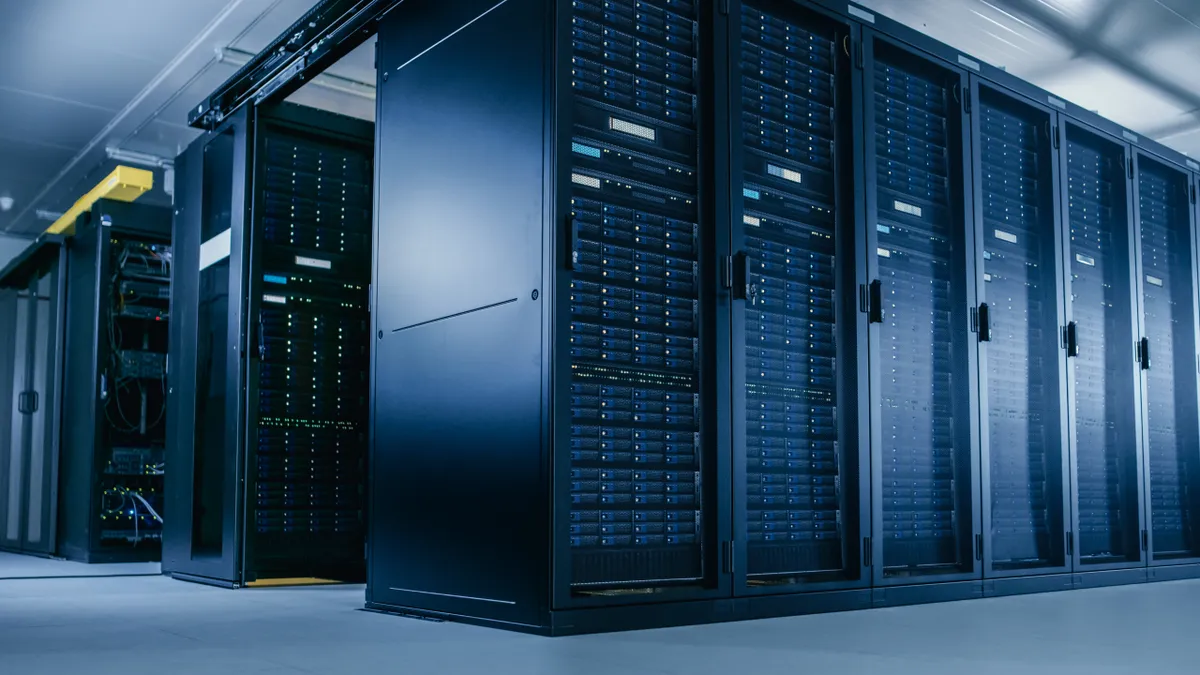Dive Brief:
- Vertically-integrated electric utilities can benefit from data center demand growth but will also face credit risks unless contractual safeguards and other cost recovery mechanisms are put in place, according to a Monday report from Moody’s Ratings.
- The report names Dominion Energy subsidiary Virginia Electric and Power Co., Pinnacle West Capital subsidiary Arizona Public Service, and Southern Co.’s Georgia Power as utilities well positioned to benefit from higher revenues associated with serving cloud computing, artificial intelligence and other digital services.
- Data center electricity demand could double by 2030 to consume 9% of U.S. electricity generation, according to analysis published by the Electric Power Research Institute in May. Some experts, however, doubt that all of the anticipated load growth will materialize as AI-enabling chips and algorithms become more efficient.
Dive Insight:
After years of stagnant electricity demand, many utilities see opportunity in the rapidly-increasing energy requirements of data centers. But Moody’s report warns that without proper safeguards, utilities will face credit risks in the event new demand does not materialize as hoped.
“The complications of serving new, large-scale data centers leaves utilities exposed to two fundamental risks,” analysts at Moody’s said. “On the demand side, utilities could overbuild system capacity for load that never materializes or that serves the new load for a period of time that is shorter than the useful life of the new power asset. On the supply side, utilities could promise capacity to a data center customer that is not actually available by the time the customer requires it.”
“Cost allocation and rate design are key for financial stability and to avoid cross-customer subsidization,” Moody’s said. “If a data center ceases operations or simply does not use as much power as originally envisioned, some of the infrastructure costs incurred to serve this expected demand could be socialized to other customers.”
Data center demand is rising rapidly, driven in part by AI applications that EPRI says require 10 times or more the electricity of traditional internet searches. Cloud services and crypto currency mining are also contributing to the increase.
But whether high-end demand forecasts materialize is an open question, say some experts, as the technology becomes more efficient. Jim Robb, president and CEO of the North American Electric Reliability Corp., said he doubts all of the load growth being forecast today will materialize, as both AI-enabling chips and algorithms become more efficient.
“In the 90s and early 2000s we had similar concerns around electricity demand that largely didn’t actually occur because the chips got better, the algorithms got better,” Robb said last month in a discussion hosted by the United States Energy Association. “We will see something similar happen with the AI chips ... We’re going to see load growth, but it’s probably not [going to be] as dramatic as we think right now.”
Because the electricity supply contracts between utilities and data centers are signed before construction begins, “a utility is effectively building generating capacity for power that is contracted and reserved for today, but will not be used until later,” Moody’s said. “Generation capacity forecasts are also vulnerable to unexpected customer departures, such as when a hyperscaler tenant decides to move to another location ... or when a colocation landlord has insufficient tenant demand to meet its power contract obligations.”
To minimize the potential for cross-customer subsidization, Moody’s said most state regulators will likely require utilities planning to serve a new data center to “institute safeguards that allocate associated costs to that customer.” Those could include requirements for the data center to pay for engineering and feasibility studies, along with local distribution and transmission integration costs.
Minimum payments for an operational data center, regardless of the actual power used, and early termination payments if the data center were to cease operations before a certain date, are also protections that regulators could put in place, Moody’s said.















